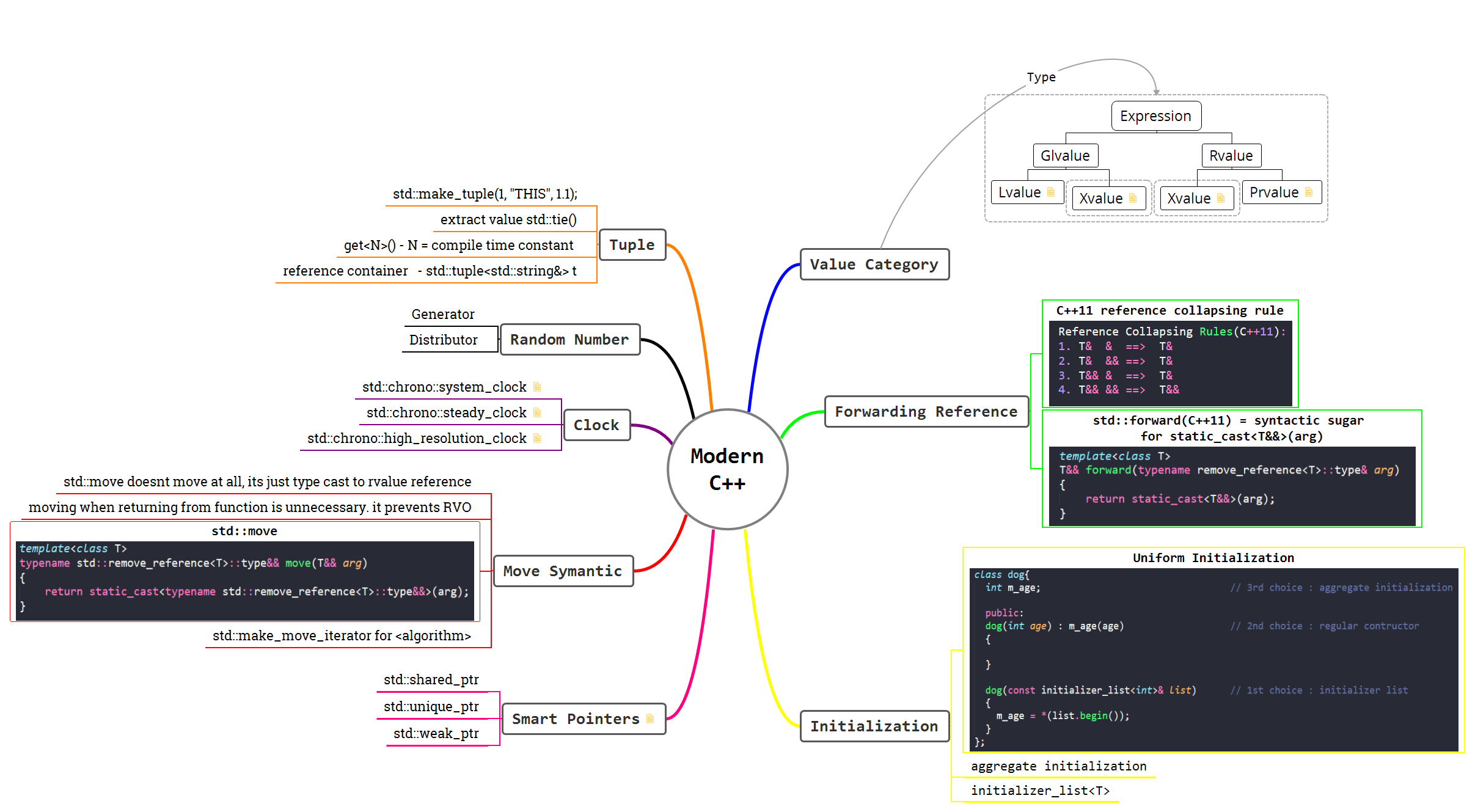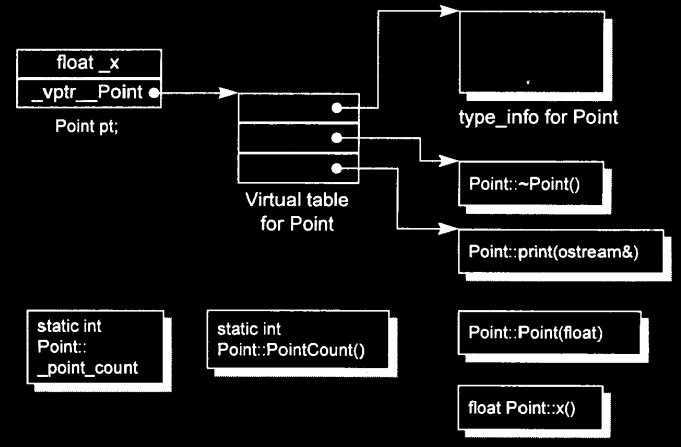This topic might be a piece of cake for every experienced C++ veteran. But I remember back in the days when I was a novice & introducing myself with Modern C++, I was really irritated by C++ compiler messages saying this is lvalue & that is rvalue kind of jargons. And even if you are not using C++, you may have faced compiler error in C language saying “lvalue required as left operand of assignment”.
So I was getting difficulties in understanding this un-schooled topic “lvalue rvalue and their references with example in C++” until I have googled a bit for the same. This is my habit to preserve knowledge in term of an article. So here is a bit about things I had learned so far. I always start with “Why do we need that?” So let’s start from there.
Contents
Why Do We Need Lvalue & Rvalue Kind of Jargons?
- If you are using C++ prior to C++11 then you don’t need these jargons to write code. But yes it is still useful to understand compilation errors.
- The compiler sees things by expression & to evaluate expression it identify operand & operation. Let’s understand this by example:
uint32_t a = 5;
- Here compiler identifies
a&5as operand and=(assignment) as operation. Furthermore, compiler divides operand in subcategory named asrvalues,lvalues,xvalues,glvalues, andprvaluesto distinguish between them(see heading image for hierarchy). This different value type tells the compiler about the source, destination, the scope of information, etc. - In the above expression
ais lvalue as it indicates destination memory where rvalue i.e.5will be stored. - When you compile & see above statement in assembly, it would probably look like :
... movl $5, -4(%ebp) ...
- Here,
(%ebp)is current frame pointer which pulls down by 4 bytes which indicate space allocated by the compiler for a variable in a stack. Andmovlinstruction store5to that memory location directly. - This is straight forward as long as we are using primitive data types like
int,double,char, etc. So compiler will store raw value directly in instruction code itself like in our case its$5. After the execution of that instruction,$5is not used, so it has an expression scope, in other words, it is temporary. - But when we use class & struct which are the user-defined type, things get bit complex & compiler introduce temporary object instead of directly storing the value in instruction code itself.
TL;DR
We need this kind of jargons to understand compilation error & to see things from a compilers perspective. And yes! if you are using C++11 or above, you need to understand these jargons to write robust, fast & optimize code.
Lvalue Rvalue and Their References With Example
What Are Lvalue & Rvalue?
- lvalue & rvalue is compiler identifiers to evaluate the expression.
- Any compiler identifier which represents memory location is an lvalue.
- Any compiler identifier which represents data value on the right-hand side of an assignment operator(=) is rvalue.
Examples of Lvalue
- There are two types of lvalue modifiable & non-modifiable(which are
const).
1. modifiable lvalue
| Expression | Explanation |
a = 1; | a is lvalue as it represents memory |
int b = a; | b & a is an lvalue, when a is assigned to b. It becomes an implicit rvalue because of a copy of a is stored in b, not a itself |
struct S* ptr = &obj; | ptr is lvalue |
arr[20] = 5; | location index 20 in arr is lvalue |
int *pi = &i; *pi = 10; | i is lvalue as it is addressable. *pi is lvalue as it points to i |
class MyClass {}; MyClass X; | X is lvalue as it represents the memory of user-defined type |
2. non-modifiable lvalue
| Expression | Explanation |
const int a=1; | a is non-modifiable lvalue |
const int *p=&a; | p is non-modifiable lvalue |
Examples of Rvalue
| Expression | Explanation |
int a = 1; | 1 is rvalue |
int b = a; | a is implicit rvalue this case we have already discussed in 2nd point of “Examples of lvalue” |
q = p + 5; | valid – p + 5 is an rvalue |
int result = getInteger(); | the value returned by getInteger() is rvalue |
class cat {}; c = cat(); | cat() is an rvalue |
- rvalue could be a function on the right-hand side of = assignment operator which eventually evaluate to object(primitive or user-defined).
- rvalues are typically evaluated for their values, have expression scope (they die at the end of the expression they are in) most of the time, and cannot be assigned to. For example:
5 = a; // invalid getInt() = 2; // invalid
Lvalue Rvalue References With Example
lvalue reference
- An lvalue reference is a reference that binds to an lvalue.
- lvalue references are marked with one ampersand
&.
int x = 5; int &lref = x; // lvalue reference initialized with lvalue x
- Prior to C++11, only one type of reference existed in C++, and so it was just called a “reference”. However, in C++11, it’s sometimes called an lvalue reference.
- lvalue references can only be initialized with modifiable lvalues.
const int a = 5; int &ref = a; // Invalid & error will be thrown by compiler
Exception
- We cannot bind lvalue reference to an rvalue
int &a = 5; // error: lvalue cannot be bound to rvalue 5
However, we can bind an rvalue to a const lvalue reference (const reference):
const int &a = 5; // Valid
- In this case, the compiler converts
5into lvalue first & then it assigns memory location to a const reference.
rvalue reference
- This is by far the most useful & bit complex thing you will learn.
- An rvalue reference is a reference that binds to an rvalue. rvalue references are marked with two ampersand
&&.
int &&rref = 5; // rvalue reference initialized with rvalue 5
- rvalues references cannot be initialized with lvalues i.e.
int a = 5; int &&ref = a; // Invalid & error will be thrown by compiler
- rvalue references are more often used as function parameters. This is most useful for function overloads when you want to have different behaviour for lvalue and rvalue arguments.
void fun(const int &lref) // lvalue arguments will select this function
{
std::cout << "lvalue reference to const\n";
}
void fun(int &&rref) // rvalue arguments will select this function
{
std::cout << "rvalue reference\n";
}
int main()
{
int x = 5;
fun(x); // lvalue argument calls lvalue version of function
fun(5); // rvalue argument calls rvalue version of function
return 0;
}
Why Do We Need Rvalue References?
- If you observe the copy constructor & copy assignment operator prototype, it always takes
constreference object as an argument. Because their primary work is to copy the object. And while copying we don’t want to modify the object we have provided on the right-hand side of the expression. - But there are some scenarios where we don’t care about the right-hand side object we have provided to copy from. For example:
class IntArray{
int *m_arr;
int m_len;
public:
IntArray(int len) : m_len(len), m_arr(new int[len]){}
~IntArray(){delete [] m_arr;}
// Copy Constructor
IntArray(const IntArray& rhs){
m_arr = new int[rhs.m_len];
m_len = rhs.m_len;
for(int i=0;i<m_len;i++)
m_arr[i] = rhs.m_arr[i];
}
};
IntArray func()
{
IntArray obj(5);
// process obj
return obj;
}
int main()
{
IntArray arr = func();
return 0;
}
// Note: use "-fno-elide-constructors" option while compiling otherwise it will create copy elision
- By observing this code we conclude that
objis not useful after the return offunc()function. But when you return an object by the value it will invoke copy constructor & which will copy all the content fromobjtoarr(declared inmain()) by allocating new resource forarr. And whenobjgoes out of scope it will deallocate its resources. - Rather than allocating new resources & copying data into it why don’t we simply use those existing
obj‘s resources? Let’s do that:
Move Constructor
IntArray(IntArray&& rhs){
m_arr = rhs.m_arr;
m_len = rhs.m_len;
rhs.m_arr = nullptr; // To prevent code crashing
}
- I have just modified copy constructor code as above which accept rvalue reference as an argument rather than lvalue so that our overloaded copy constructor will only be called when there is an rvalue is used on the right-hand side.
- Which simply means this constructor will only be called when right-hand side object is temporary or programmer is no longer care about that object.
- The implementation simply took ownership of resources from
objtoarrand set right-hand side object’s pointer toNULLso that its destructor won’t deallocate resource which it is no longer owning. - In fact, this is move constructor, not a copy constructor. Whose primary task is to take/move ownership of resources.
- Consider following move constructor prototype for more solid understanding:
Catching Rvalue Reference
IntArray(IntArray&& rhs)
{
...
}
- The message of this code is this: “The object that
rhsbinds to is YOURS. Do whatever you like with it, no one will care anyway.” It’s a bit like giving a copy toIntArraybut without making a copy.
This can be interesting for two purposes:
– improving performance (as we are not allocating new resources & transferring content).
– taking over ownership (since the object the reference binds to has been abandoned by the caller).
- I know you might be thinking that why just we don’t modify copy constructor by removing
constkeyword from it. Let’s do that as well
IntArray(IntArray& rhs){
}
- Compilation error
exit status 1
error: no matching constructor for initialization of 'IntArray'
IntArray arr = func();
^ ~~~~~~
note: candidate constructor not viable: expects an lvalue for 1st argument
IntArray(IntArray& rhs){
^
1 error generated.
- If you see the
noteabove, our overloaded copy constructor asking for lvalue. What we are doing is providing rvalue. As when we return an object by value, temporary(which falls under rvalue category) object will be created and supplied to our copy constructor. And as we have already seen above lvalue reference cannot bind to rvalue object. - Don’t think about changing your copy constructor’s argument as
constlvalue reference, I know we have seen that its exception & we can bindconstlvalue reference to rvalue/temporary object. But in that case, you can not move/transfer resource as it isconst.
So, this is it for “lvalue rvalue and their references with example”, in the next article we will design smart pointer using rvalue reference & other concepts gained here.
Do you like it☝️? Get such articles directly into the inbox…!?

